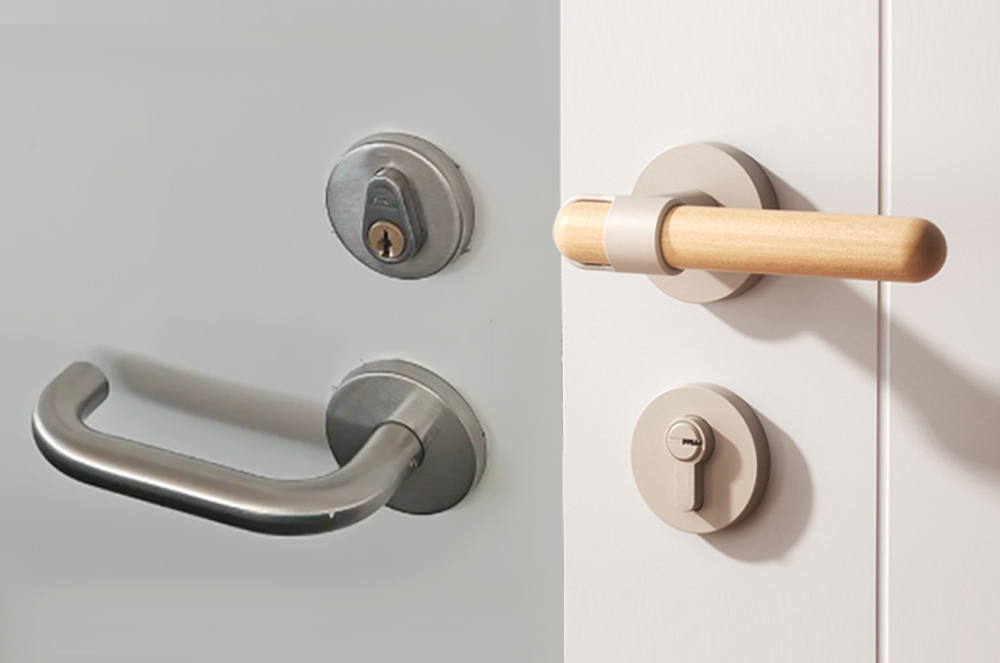In the architectural hardware industry, door hinges are critical components that ensure stability, safety, and durability in door systems. For the European market, the CE marking is essential for legal sale and installation, and EN1935 is the primary performance standard for door hinges under CE compliance.
So, what exactly qualifies as a CE-compliant door hinge? What are the technical requirements of the EN1935 certification? In this article, we’ll explore the full details of EN1935 and share how our factory’s CE-certified hinges meet these standards.
What Is EN1935?
EN1935 is a European standard developed by CEN (European Committee for Standardization) that outlines performance requirements for single-axis hinges, widely used in residential, commercial, and public buildings.
To achieve CE marking, door hinges must pass rigorous EN1935 tests, including:
-
-
Load capacity testing
-
Durability (cycle) testing
-
Corrosion resistance
-
Safety in use
-
Noise reduction (optional depending on usage)
-
Key EN1935 Testing Criteria
EN1935 classifies door hinges into 13 performance grades, each reflecting usage level, durability, and environmental resistance.
| Test Category | Description | Requirements |
|---|---|---|
| Grade Level (1-14) | Defines usage frequency and load class | Grade 13 = highest level |
| Durability | Cycle testing up to 200,000 cycles | High-grade hinges must pass without failure |
| Load Capacity | Weight and size of applicable door | Up to 160kg door weight |
| Corrosion Resistance | Salt spray testing (Grades 0-5) | For various environmental conditions |
| Safety Level | Fire and smoke door compliance | Fire-rated hinges available |
A hinge that passes EN1935 means it meets EU safety and performance standards and is eligible for CE marking, allowing it to be legally sold in the EEA.
MARCHRY HARDWARE CO., LTD – Your CE-Certified Manufacturer

At MARCHRY HARDWARE CO., LTD, we specialize in the production of high-quality architectural hardware. Since 2007, we have been committed to delivering reliable, well-crafted door hinges that meet the EN1935 standard and are CE certified.
Our CE-marked door hinges are suitable for a wide range of applications including residential, commercial, public facilities, and fire-rated doors.
Why Choose Our Hinges?
-
-
Genuine material and solid construction
-
Tested to Grade 13 – heavy-duty compatible
-
Corrosion resistance up to Grade 4
-
OEM/ODM available for project-specific needs
-
How to Identify EN1935-Certified Hinges?
Here’s what to look for:
-
-
Check for CE mark and EN1935 grade on product
-
Ask for third-party test reports
-
Verify the manufacturer’s certification
-
Test hinge functionality and finish quality
-
Why Work with a CE-Certified Manufacturer?
Partnering with a CE-certified factory like MARCHRY HARDWARE ensures product compliance, quality assurance, and simplified procurement for European projects. We help save your time and cost with verified, ready-to-use solutions.
Final Thoughts
The EN1935 standard defines what makes a door hinge reliable, safe, and suitable for European applications. With CE-certified production and strict quality control, MARCHRY HARDWARE CO., LTD is your trusted partner for professional door hardware.
If you’re looking for CE-compliant hinges with real performance, feel free to contact us for samples and reports. Let us help your project meet European standards with confidence.
MARCHRY HARDWARE
WEBSITE: www.marchry.com
MAIN PRODUCTS: Door handle, Door knob, Pull handle, Door stopper, Door lock, Toilet partition hardware, Furniture handle, etc.





